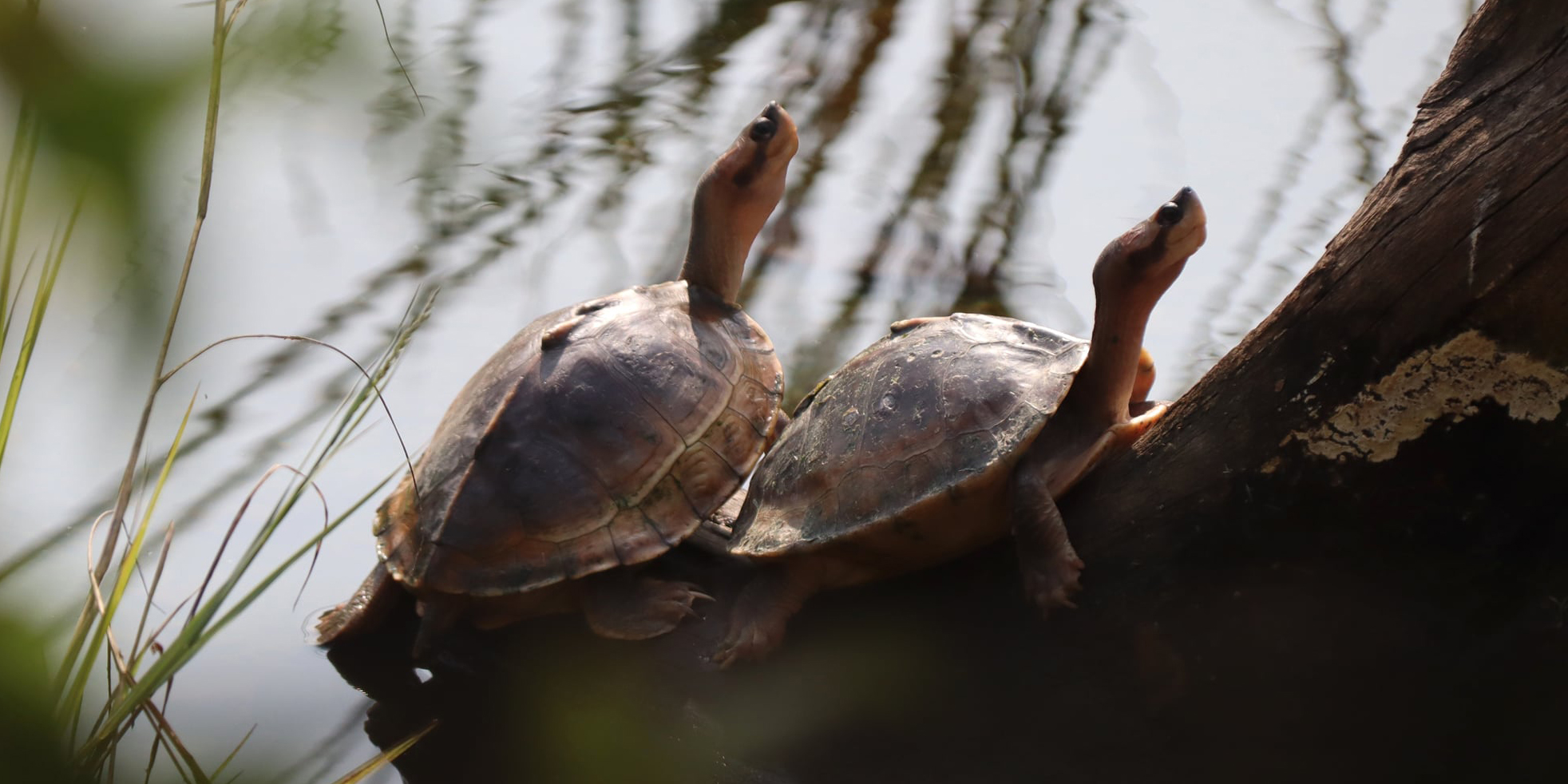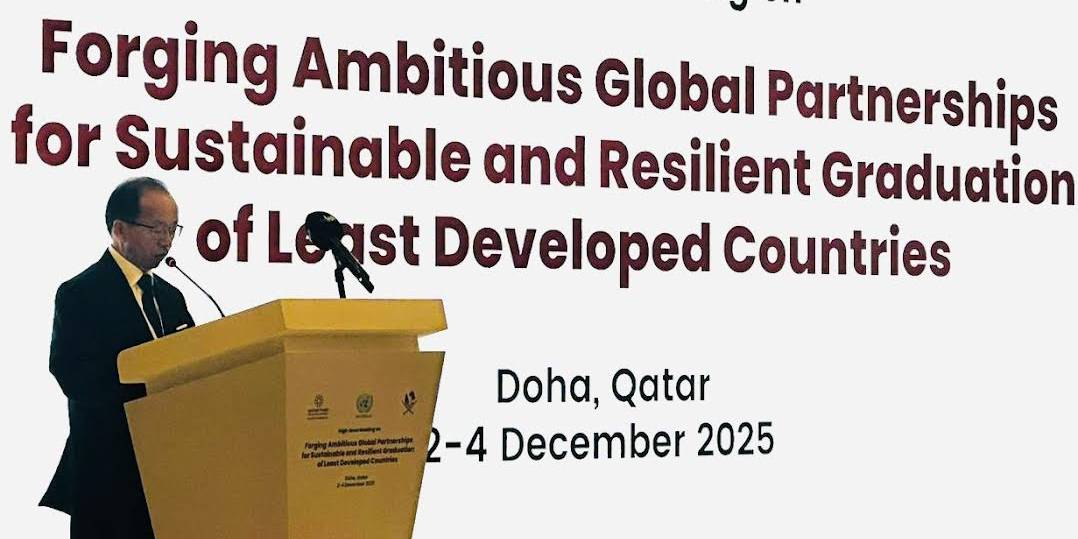 Photo Courtesy: ARCO Nepal
Photo Courtesy: ARCO Nepal
KATHMANDU: Turtles are facing the imminent threat of extinction in Nepal due to a lack of interest in conservation. Neglect from the government in terms of studying and protecting this reptile species has significantly raised the risk of these vital water body cleaners disappearing.
A total of 17 species and two subspecies of turtles have been recorded in Nepal so far. Some of these species are elongated tortoise, Indian eyed turtle, Indian soft shell turtle, Indian roofed turtle, crowned river turtle, red crowned roof turtle, Bengal black turtle, and spotted pond turtle. Four of the 17 turtle species recorded in Nepal are in a critically endangered situation, while seven are in an endangered situation.
According to Prakash Chandra Aryal, an amphibian and reptile expert, there has been insufficient research conducted on the species of turtles recorded in Nepal. He highlighted the lack of information regarding the whereabouts, population size, and current status of these species. Studies conducted by Prof Karan Bahadur Shah’s team in 1995 and by Kaluram Khumbu in 2000 give some insights about turtles in Nepal, he added.
In 2008/09, Aryal’s team conducted a study on 120 ponds, rivers, and wetlands in Terai. However, since then, there has been a lack of comprehensive research on these reptiles.
Aryal pointed out that the study of turtles is primarily confined to theses conducted by students. Additionally, there is a dearth of teaching materials focused on turtle conservation.
Turtles pose a unique challenge when it comes to population assessment, making them difficult to count accurately. Conservationists further emphasize that the insufficient studies and research on turtles can be attributed to the lack of interest in turtle conservation.
Scientific studies indicate that turtles have been in existence for approximately 200 million years, predating the emergence of dinosaurs. Despite the extinction of dinosaurs, turtles have managed to persist and preserve their species. However, numerous turtle species have indeed become extinct over time, and many others currently face the threat of extinction.
No comprehensive study
Chandramani Aryal, Associate Professor at Padmakanya Campus, highlighted the difficulty in securing funding for studying small species like turtles. “In contrast, it is relatively easier to find donors for larger animals such as tigers, rhinos, and elephants,” Aryal added.
Tapil Prakash Rai of the Turtle Conservation Center said turtle conservation lacks significant interest, even from the government. “There has been a lack of comprehensive studies on the number of turtle species and their distribution. One of the reasons behind this is the government neglect,” Rai added.
That the Department of National Parks and Wildlife Conservation has not implemented a dedicated program specifically focused on turtle conservation. While a breeding facility for turtles has been established in Kasara, it falls short in terms of adequately addressing the conservation needs.
Aryal also said that the government has not prioritized turtle conservation. “Government officials often say the protection of larger animals in expansive areas will indirectly safeguard smaller species as well. Turtles are not receiving the necessary priority from the government, making turtles outside protected areas particularly vulnerable to threats and risks,” he added.
Turtles in trouble
According to Rai, turtles are currently facing a critical situation. Data from 2020 indicates that 60% of turtle species found in Nepal are endangered. “At present, around 75% of turtles in Nepal are at risk of extinction,” he added.
Aryal also said turtles are in crisis due to several factors including increasing poaching, human encroachment, limited water resources, and inadequate habitat management. “There is a lack of awareness among people. Turtles are hunted for consumption. Additionally, fishing contracts awarded to private parties for large ponds in Tarai contribute to the conservation challenge, as turtles caught in fishing nets are often sold for meat,” he added.
He added that turtles in Nepal are also impacted by poaching, as there is a significant market for turtles in China and Vietnam. Often turtles poached in India reach international markets via Nepal.
Ashmita Shrestha, the president and researcher of Greenhood Nepal, also said turtles are under threat due to increased poaching. “During our study in Koshi Tappu, we observed that poaching was going unabated. We found people hunting softshell turtles for their meat,” she added.
Conservation activists say drying up of wetlands, ponds, and streams due to human encroachment is damaging the habitat of turtles.
Shrestha, who is involved in the conservation of critically endangered elongated tortoise in eastern Nepal by raising awareness among local people and authorities, said turtles are also endangered due to superstitions surrounding them. “Some individuals keep turtles as pets believing that they bring good luck. Similarly, some were found keeping turtle shells in animal sheds believing that it will ward off evil spirits,” she added.
Kushal Shrestha, another researcher from Greenhood Nepal, said there is a lack of information about turtles in the curriculum. “I gained a deeper understanding of this creature only through my personal involvement in research. There is little information about these reptiles even in the curriculum of the Masters level,” he added.
Shrestha also echoes the complaint about the lack of emphasis on turtles in education. She shared that it was only after conducting a general study on turtles that her friends and fellow science students began showing interest in these creatures.
Saving turtles
Similar to how vultures play a crucial role as scavengers on land, turtles serve as scavengers in water bodies. They contribute to the balance of the aquatic ecosystem. Additionally, turtles help regulate populations of earthworms, crabs, and snails by consuming them, preventing their numbers from growing excessively.
“Turtles play a vital role in maintaining clean water by consuming diseased and decaying animals, larvae, and other organic matter,” she said, adding: “Over 350 species live in burrows that Gropher tortoises build.”
Aryal said tortoises play a role in the dispersal of certain plants. “They consume fruits and help in seed dispersal through their excrement,” he added.
Rai emphasizes that protecting turtles is interconnected with safeguarding forests, wetlands, and rivers.
Sabin Adhikari, the program coordinator of Turtle Rescue and Conservation Center, Jhapa, highlighted the importance of raising awareness and changing people’s perception to save turtles. “When people see turtles while collecting fodder or fishing, they bring them home for consumption or keep them as pets. Some eateries are found serving dishes made from turtle meat,” he added. “Therefore, the first step in turtle conservation should be to create awareness and change attitudes towards turtles.”
Shrestha from Greenhood Nepal concurs with Adhikari’s observation that there is a lack of awareness within the community regarding turtles. “Many people do not know that eating or selling turtle meat is punishable by law,” she added.
Aryal suggests developing a comprehensive plan for turtle conservation. “Conservation efforts become successful only if it is connected with the livelihoods of the local community. It is crucial to inform and educate local people about the importance of turtles and their significant impact on the natural environment,” he added.
He said the practice of contracting ponds and wetlands should be regulated to ensure the protection of turtle habitats.
Rai, on the other hand, proposes linking turtle conservation efforts with religious beliefs. “In Hinduism, turtles are regarded as incarnations of Lord Bishnu, similar to how cows are revered as Goddess Lakshmi. This way we can educate people against poaching and killing turtles,” he added.
Aryal said the government should develop a comprehensive plan for turtle conservation. “Officials tell us it is difficult to formulate such a plan due to a lack of data regarding the specific issues affecting turtle populations,” he said.
“Studying all turtle species simultaneously may not be feasible. The government can begin with focusing on species such as the yellow turtle found in the Sal forest,” he said, adding: “Similar plans can be created for other turtle species facing conservation challenges later on.”













